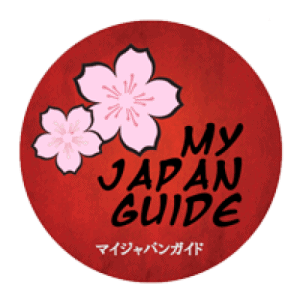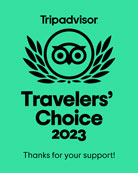Travel Japan Info
First Time Japan Visit
Dono kisetsu ga suki desu ka?
どの季節が好きですか?
Translation: Which season do you like?
Japan is a year-round destination, and the Japanese appreciate the changing of the seasons (Kisetsu) which are celebrated with seasonal foods and festivals.
The Japanese archipelago stretches from North to South, which means that each region has a different climate so weather will be different depending on the time of the year and place you travel. Winter in Kyushu and Okinawa is mild, while summer in Hokkaido is cool.
- In spring, the lucky time it to catch the Sakura (cherry blossoms in full bloom).
- In summer, it’s a good time for festivals and great beaches and hanabi (fireworks).
- In fall, Japan is famous for its Koyo (colorful leaves) and pleasant temperatures.
- In winter, you’ll get amazing skiing & snowboarding, it’s the perfect time for seafood and Onsen (hot springs).
Main holidays are April 29 to May 5 (Golden Week), from mid-July to mid-August (O-bon), and New Year, which are very crowded. But you can travel in Japan virtually any time of the year.
Mobile Phone
If you need a Mobile Phone to call, note that you can not buy a prepaid phone without Japanese identification, but you can find rental kiosks like JALBAC or Softbank at Narita and Kansai airports. You can usually use your 3G or 4G phone from home, but know that there is no GSM network in Japan, so GSM-only phones do not work and be careful of the roaming fees.
You can also get a SIM card at the airport, but it can be quite expensive. It’s often better to use Wi-Fi and a voice chat app (See WiFi section).
Wifi
Wi-Fi is a necessity to almost all travelers and in Japan, Wi-Fi is not too difficult to get and it is almost everywhere. You can use these Free apps, Japan Connected-free Wi-Fi or Travel Japan Wifi.
But if you are traveling with family or friends, we suggest and provide Pocket WiFi Rental Services, as you can connect more than one device and you can have it delivered directly to your hotel.
Visa
For most nationalities visas are issued on arrival for stays of up to 90 days.
Electricity
The voltage in Japan is 100 Volt, which is different from North America (120V), Central Europe (230V) and most other regions of the world. It uses 2-flat-pin NEMA plugs without cylindrical grounds. You may need an adapter.
Useful sentences
Ten Favorite Japanese Expressions
Master these common Japanese expressions and use them casually to sound like a native.
Yatta: (yaht-tah; I did it!)
Hontô: (hohn-tohh; Really?)
Â, sô desu ka: (ahh, sohh deh-soo kah; Oh, I see.)
Mochiron: (moh-chee-rohn; Of course!)
Â, yokatta: (ahh, yoh-kaht-tah; Oh, good.)
Zenzen: (zehn-zehn; Not at all.)
Nani: (nah-nee; What?)
Dôshiyô: (dohh-shee-yohh; What shall I do?)
Â, bikkurishita: (ahh, beek-koo-ree-shee-tah;
What a surprise!)
Yappari: (yahp-pah-ree; I knew it would happen.)
Money
In big cities, major hotels, department or convenient stores, stations, taxis and restaurants will accept most credit cards.
Japan used to be a backward country in terms of credit card usage, as most of Japanese used to pay cash. With the upcoming 2020 Tokyo Olympics and the increase of overseas tourists visiting Japan, it’s getting better, but smaller shops and tourist spots may not.
24hr credit card Emergency Numbers:
American Express: 0120 020 120
Mastercard: 03 3256 6271
Visa: 0120 133 1363
ATM/Cash
Japan loves cash and Many ATMs in Japan do not accept cards that are issued outside of Japan. You can withdraw JPY with a foreign card at Post Offices and 7-Eleven ATMs.
Traveler’s checks can be changed at International airports and leading banks but also major hotels.
Consumption tax
10% tax is applied to every purchase. However, as a special measure, tourists from overseas are exempt from paying consumption tax and an increasing number of stores offer tax-free shopping for foreigners, when purchasing more than JPY5.000—check for the signs. But you need to bring your passport along with you when shopping to get the exemption.
Japan Rail Pass
The Japan Rail Pass is the easiest way to discover all the wonders of Japan. It is intended for use by overseas tourists, under the entry status of “temporary visitor.” However, you cannot use your JR pass on other trains that are not “JR”, like the subway or any other train company.
Get more info and purchase here.
Booking and information http://www.hyperdia.com/en/
Train & Subway
Japan is covered by an extensive and reliable network of railways. It’s a very convenient way for visitors to travel around Japan, especially in conjunction with the Japan Rail Pass. You can get all the info you need at the JR East website.
Major cities like Tokyo and Osaka have mass-transit rail systems and you’ll have to buy your ticket from a machine. But we recommend to buy a prepaid card, chargeable IC cards called PASMO or Suica card which is also a good addition with your Japan Rail Pass to use subway in Tokyo.
To find your way around, you can use this service.
Booking and information http://www.hyperdia.com/en/
Bus
Even if most Japanese cities have an extensive bus service, it’s not the best public-transport system for foreign travelers to use. It is tricky to find bus times and routes, as destinations and stops are often written only in Japanese. But a major tourist city like Kyoto will be more foreigner “friendly”.
However to go from one city to another, highway and overnight buses can be a good alternative to train. Check Keio Bus and Willer Express for more info.
Taxi
Don’t open or close the door to get into a taxi, it’s automatic. The liveried cabs are shiny, spotless and odor-free.
Taxis are very convenient and can be found even in very small cities, but communication with drivers can be difficult, and if fares are fairly uniform throughout the country, it can quickly be expensive.
In Tokyo, Uber is also a good way to request a ride within minutes.

